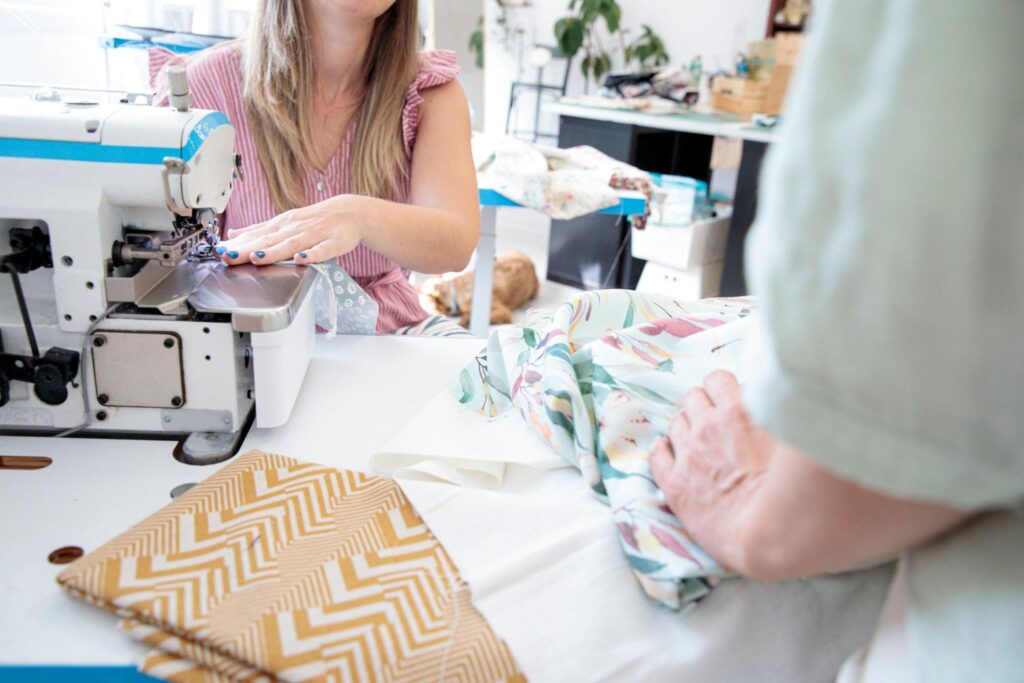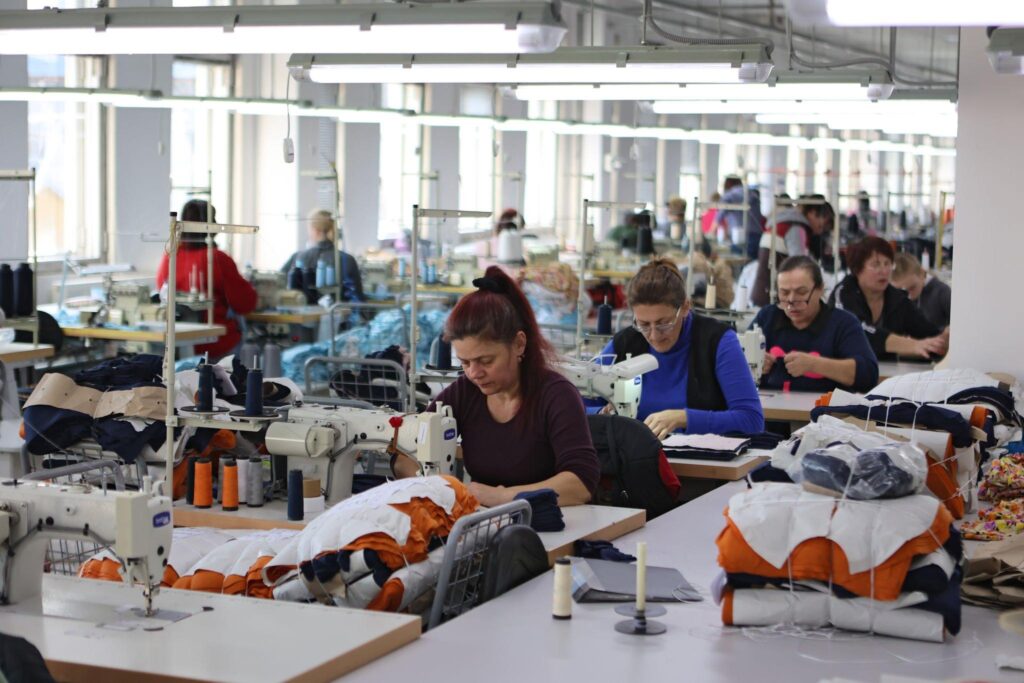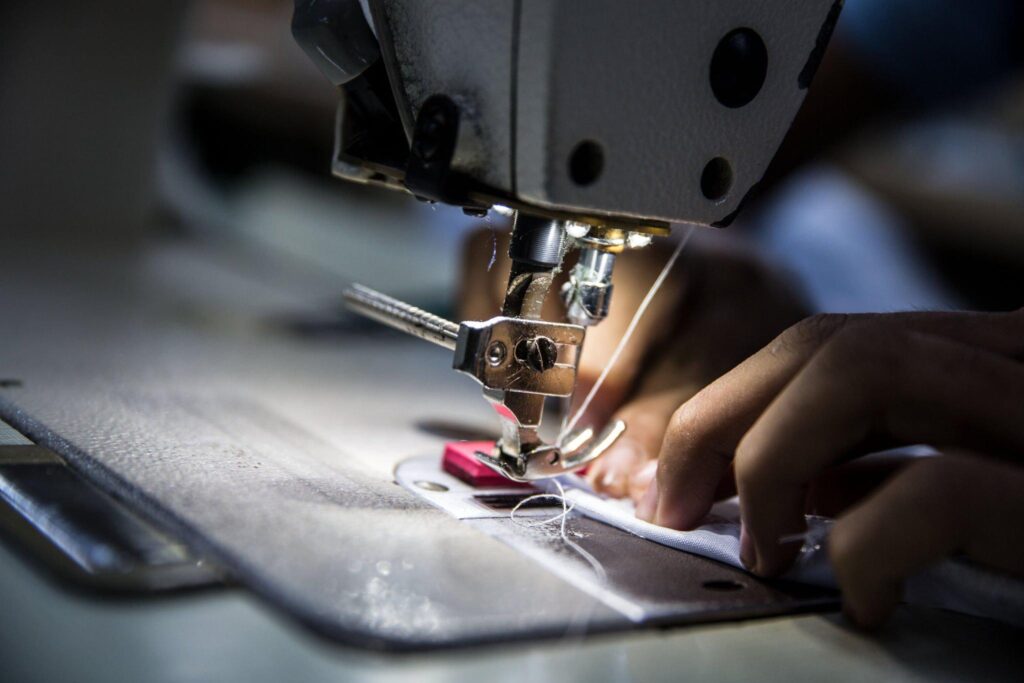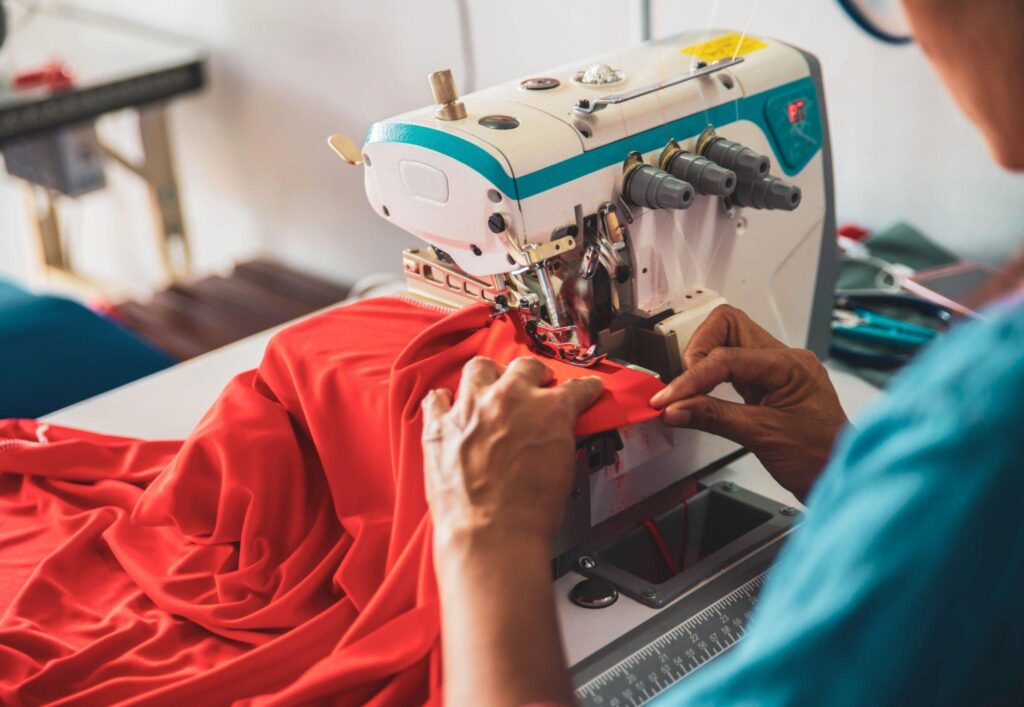The clothing production process is a systematic procedure that includes steps like;
- Laying
- Marking
- Cutting
- Stitching
- Checking
- Finishing
- Pressing
- Packing
Fabric manufacturing process is the procedure by which raw materials are transformed into final goods. If materials preparation during pre-production is disorganized, it will be hard to keep the industry going.
From the initial concept or idea for the design to the final, finished garment, there are many stages in the production of clothes.
The steps of garment manufacturing are as follows:
- Product Design
- Fabric Selection
- Inspection
- Patternmaking
- Grading
- Marking
- Spreading
- Cutting
- Bundling
- Sewing
- Pressing or Folding
- Finishing and Detailing
- Dyeing
- Washing
- Quality Check
The modern textile industry processes includes numerous and diverse techniques that increase the worth of fiber. The manufacturing process may involve everything from spinning yarn to sewing clothing to embossing fabric to producing composites.
Nonetheless, textiles manufacturing process can be broken down into traditional and technical textiles if one views textile fiber as the fundamental component of the industry.
As a result of technological advancements, new fabrics may be made using a wide range of materials and techniques. Therefore, it is desired to implement process control to guarantee product quality. Waste, expenses, and negative effects on the environment could be eliminated through careful monitoring and management of process parameters.
Steps Involved In The Apparel Manufacturing Process
-
Getting The Fabrics


Fabrics made in other countries are sent to clothing factories in large bolts with cardboard or plastic tubes in the middle, or in piles or bags. Most factories that make clothes have a warehouse or other place to store fabric before it is used to make clothes.
-
Fabric Relaxing
“Relaxing” refers to the process of letting the material loosen up and shrink before it is used to make something. The relaxing process lets fabrics shrink so that they don’t shrink too much more when customers use them.
The process of relaxing is done by hand or by machine by the people who make the clothes.
- Most of the time, to manually relax a bolt of fabric, you put it on a spinner and pull it through a piece of equipment that releases the tension in the fabric as you pull it through.
- Mechanical fabric relaxing does the same thing, but it is done by a machine.
Many clothing makers will also add quality control to this process to make sure that the fabric meets customer standards for quality. In this step, each bolt of fabric is hand-checked in a few spots using a backlit surface to look for problems like color differences or flaws in the material. If a customer doesn’t like a fabric, it is sent back to the textile clothing manufacturer.
After the fabric has been stretched, it is moved to the area of the garment factory where it is spread out and cut. First, the fabric is cut into uniform plies. Then, it is either spread by hand or with a computer-controlled system so that it can be cut. The cloth is spread out to:
- Allow operators to spot flaws in the fabric.
- When cutting, keep an eye on how tight or lose the fabric is.
- Make sure that each ply fits right on top of the others.
Next, garment forms, also called patterns, are placed on top of the spread. This can be done by hand or by programming a machine that cuts the fabric.
Lastly, the fabric is cut to match the shape of the garment forms. This can be done by hand or with a computer system.
-
Laying


Putting out a paper pattern grading helps you figure out where to put the pattern pieces in a rough way.
- Place the big pieces first, then the smaller ones.
- When laying a garment, its length should be in line with the fabric’s selvage.
- Make sure that the pattern is on the right grain. On the lengthwise grain, fabrics drape and fall better and last longer.
- Parts that need to be on the fold should be right on the fold’s edge.
- When laying out the paper pattern, think about how the fabric is designed. Make sure that the pattern goes in the same direction all the way through the garment processing. All of the seams on checks and stripes should be the same length and width.
-
Marking
This can be done by hand or with a computer;
- The planner uses full-size patterns that are arranged sparingly on marker paper.
- This is a special piece of paper with symbols on it that helps the marker planner keep track of where parts are placed in relation to grain lines.
- Markers made on paper are attached to the fabric with pins, staples, or adhesive paper that is heat-sealed to the top layer of fabric.
- The supervisors of the marker planner make plans and assign cut orders to the different tasks that need to be done in the cutting room.
-
Cutting


This is the main job of the cutting room, where clothes are spread out and cut. This is the most important step in the cutting room because once the fabric has been cut, there isn’t much that can be done to fix major mistakes.
- One of the first things to think about when planning is whether or not the totals found in the cutting room are the same as those needed to keep full production going in the sewing room and meet the delivery schedule.
- Any problems with the fabric that happens in the cutting room can slow down the work in the sewing room.
- Assuming that all of the fabric, design, and trims are good and were planned and cut correctly, the next step is to take the program from the cutting room to the sewing room.
- Straight knife-cutting machines do all of the cutting.
-
Screen Printing And Embroidery


Embroidering and screen printing are two processes that only happen when the customer asks for them;
- Embroidery is done with machines, and often more than one machine works on the same pattern on more than one garment at the same time. There could be anywhere from 10 to 20 embroidery stations on each production line.
- Screen printing is the process of using presses and dryers to put pictures made of paint on fabric. This process may have different levels of automation or may be done mostly at stations that are run by hand.
Like embroidery, screen printing is completely up to the customer. They can ask for logos or other graphics to be put on clothes, or they can ask for brand and size information to be printed instead of putting tags on.
-
Sewing
After the pieces have been cut and grouped by size, color, and number, the sewing room does the stitching or sewing.
Clothes are sewn in an assembly line. As the garment moves down the sewing line, it gets finished. Sewing machine operators get a bundle of cut fabric and sew the same part of the garment over and over again. When they’re done, they pass the finished part to the next operator.
At the end of the sewing line, quality assurance is done to make sure that the garment has been put together correctly and that there are no manufacturing flaws. When it’s necessary, the garment will be fixed or reworked at a specific sewing station.
-
Checking For Quality


No matter how well quality control or checking procedures work in a factory, there will always be a certain number of garments that can’t be sold for one reason or another.
The best ways to check for quality are;
- Setting a standard as a way to measure how well something is done.
- The planned quality standard can be used to measure and compare production results.
- If the plans don’t go as planned, the right steps need to be taken to fix them.
-
Cleaning And Laundry
Quality assurance employees look for cosmetic flaws, stains, or other spots on the garment that may have happened during the cutting and sewing processes.
They also look for manufacturing defects. Spots are often marked with a sticker, and the garment is then taken to a spot-cleaning area where steam, hot water, or chemical stain removers are used to clean the spot.
If any of the items get dirty while they are being made, they are washed in very high-tech washing machines. But you only have to do this step if the clothes are dirty.
-
Fusing And Pressing


Fusing and pressing are the two steps that have the most effect on how a garment looks when it’s done. Fusing makes the base of the garment, and pressing puts the final quality stamp on it.
After a piece of clothing has been sewn and put together, it is moved to the ironing area of the facility for the final pressing.
-
Packaging And Shipping
In the last steps before a product are ready to be sold, it is folded, tagged, measured, and packaged according to what the customer wants.
Also, clothes can be put in protective plastic bags by hand or by an automated system to keep them clean and pressed while they are being shipped.
Lastly, the clothes are put in cardboard boxes and sent to client distribution centers so that they can be sold in stores.
Finally, In Summation,


The production of clothing is also a major part of the textile industry process. Generally speaking, clothing refers to items that people put on their bodies to keep them warm, make them look nice, or feel good. Clothing and garments are synonymous phrases. It’s possible to tell the difference between the two phrases, though; apparel refers only to outerwear, whereas garment covers a wider range of clothing items.
Improvements in process control and evaluation are being made across the board in the textile manufacturing process, from raw material extraction to the packaging of final goods.




